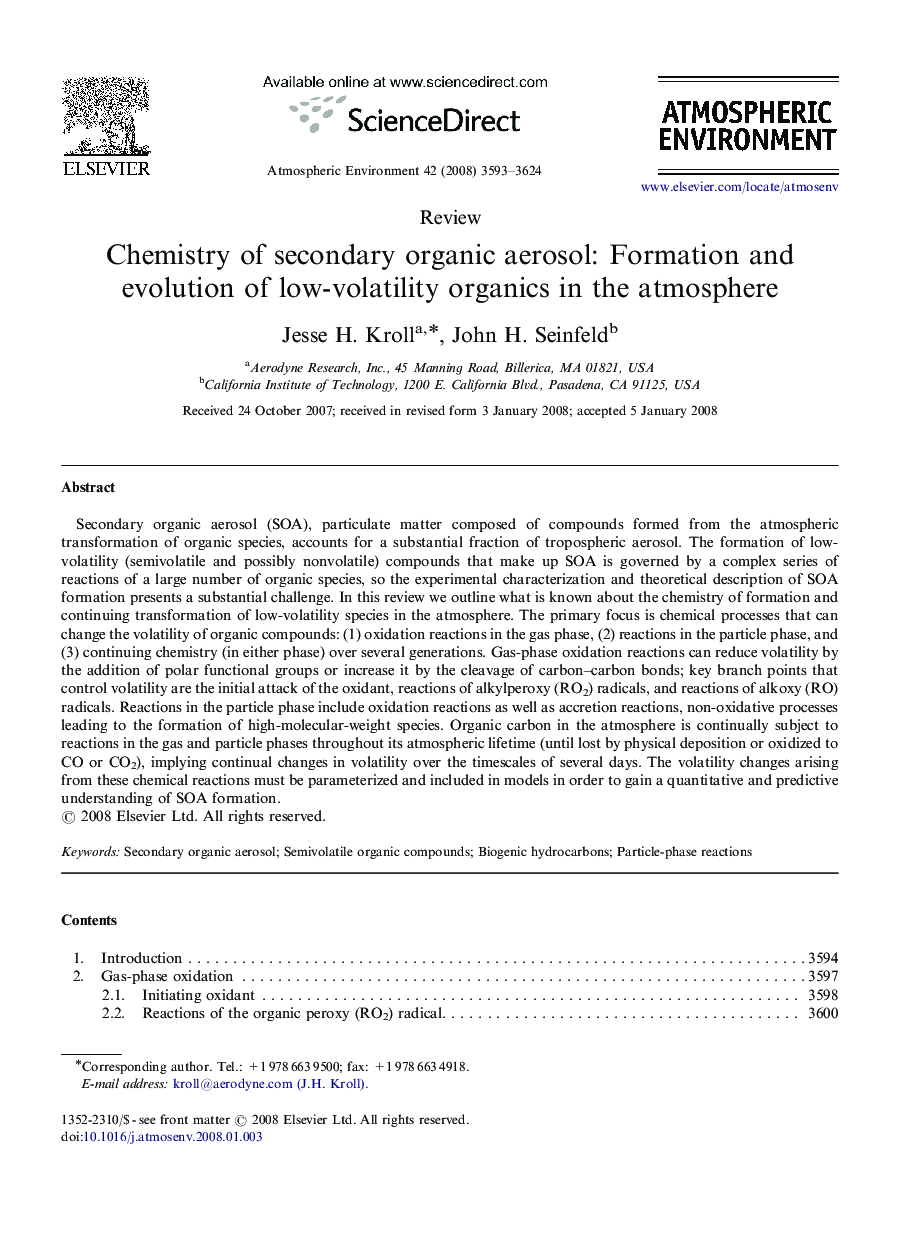| Article ID | Journal | Published Year | Pages | File Type |
|---|---|---|---|---|
| 4441910 | Atmospheric Environment | 2008 | 32 Pages |
Secondary organic aerosol (SOA), particulate matter composed of compounds formed from the atmospheric transformation of organic species, accounts for a substantial fraction of tropospheric aerosol. The formation of low-volatility (semivolatile and possibly nonvolatile) compounds that make up SOA is governed by a complex series of reactions of a large number of organic species, so the experimental characterization and theoretical description of SOA formation presents a substantial challenge. In this review we outline what is known about the chemistry of formation and continuing transformation of low-volatility species in the atmosphere. The primary focus is chemical processes that can change the volatility of organic compounds: (1) oxidation reactions in the gas phase, (2) reactions in the particle phase, and (3) continuing chemistry (in either phase) over several generations. Gas-phase oxidation reactions can reduce volatility by the addition of polar functional groups or increase it by the cleavage of carbon–carbon bonds; key branch points that control volatility are the initial attack of the oxidant, reactions of alkylperoxy (RO2) radicals, and reactions of alkoxy (RO) radicals. Reactions in the particle phase include oxidation reactions as well as accretion reactions, non-oxidative processes leading to the formation of high-molecular-weight species. Organic carbon in the atmosphere is continually subject to reactions in the gas and particle phases throughout its atmospheric lifetime (until lost by physical deposition or oxidized to CO or CO2), implying continual changes in volatility over the timescales of several days. The volatility changes arising from these chemical reactions must be parameterized and included in models in order to gain a quantitative and predictive understanding of SOA formation.
